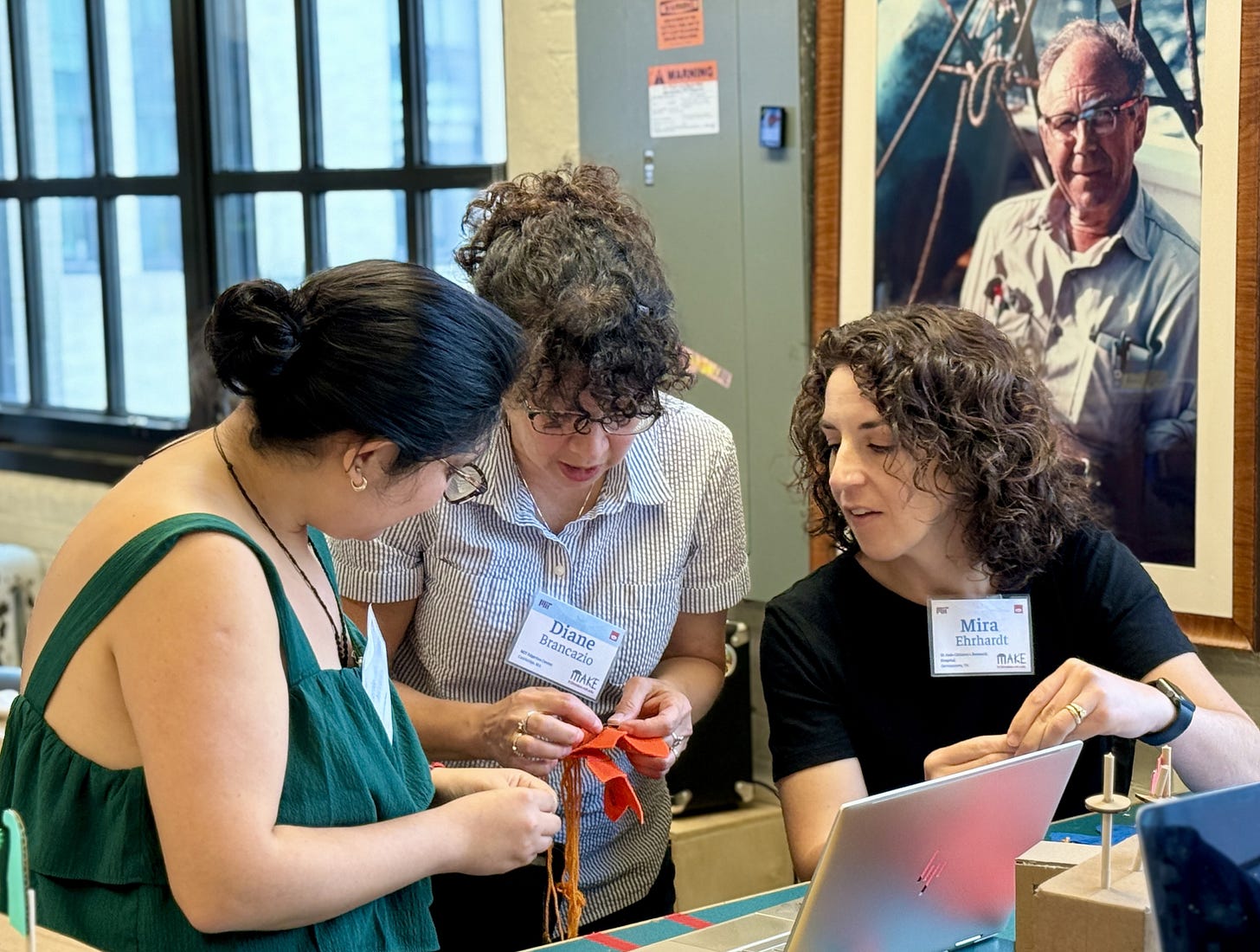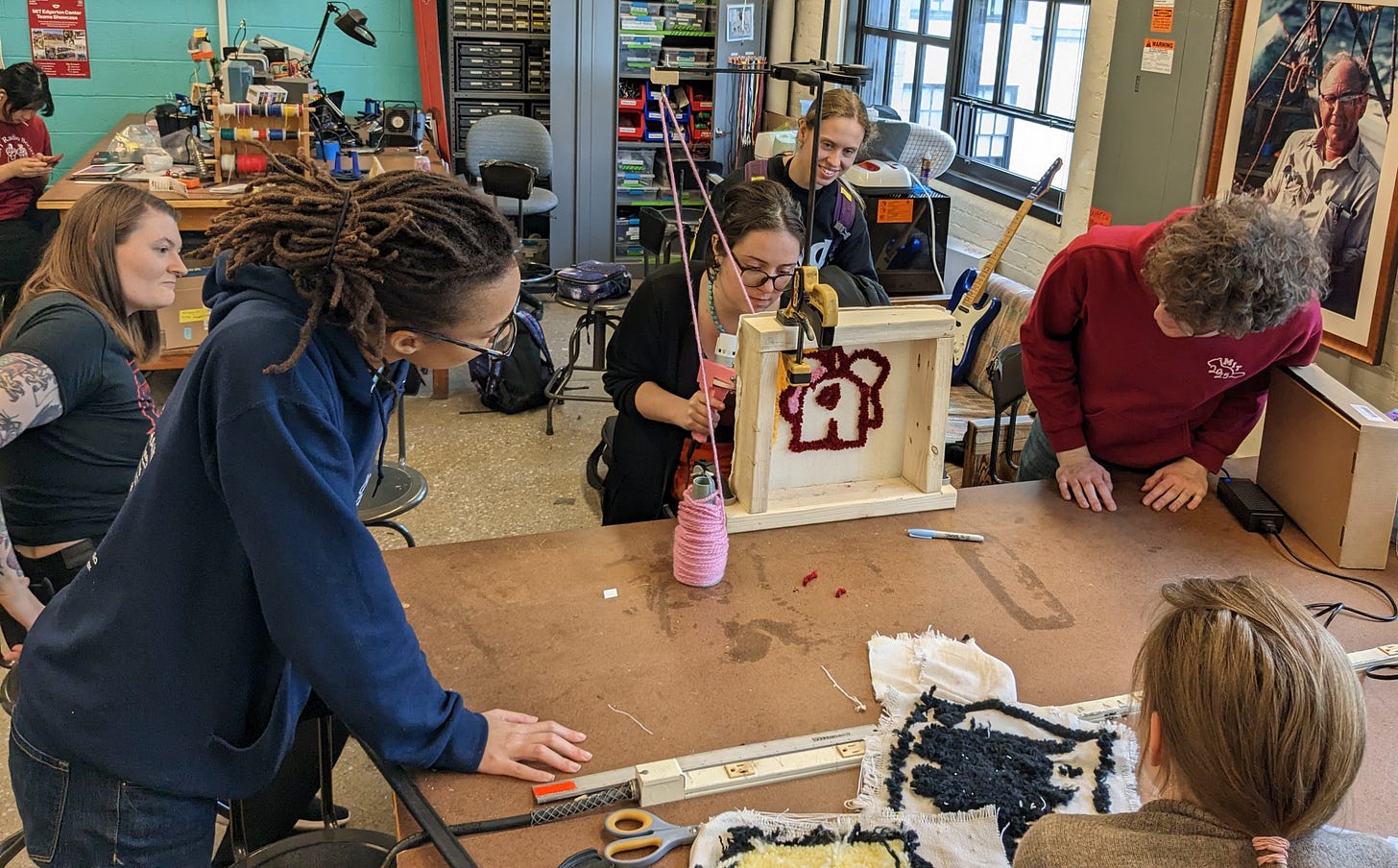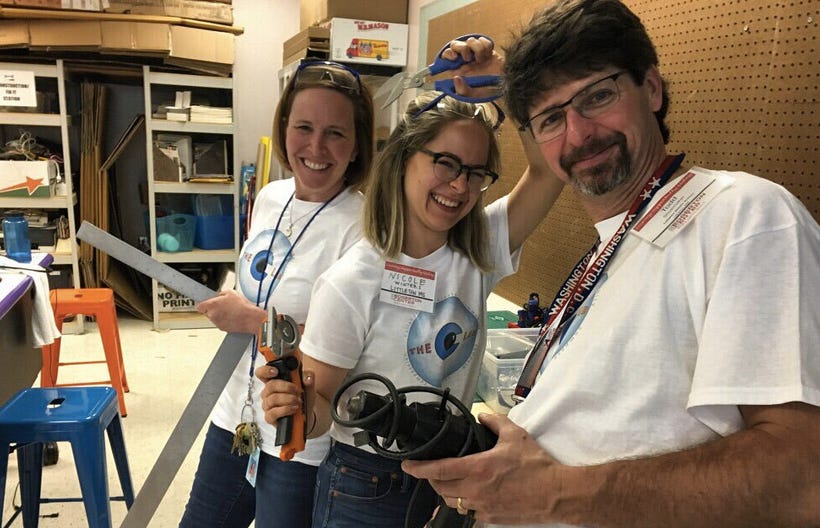Students need maker projects. Here’s how you can deliver them.
Master Making in the Classroom starts this Fall 2025
By Diane Brancazio, founder of K-12 Maker Lab at MIT Edgerton Center (dianeb@mit.edu)
Listening to teachers and following the media, I’m seeing a renewed interest in hands-on education and a desire to give more students access to Maker tools and tech. Educators at our June Maker Skills workshops inspired us with their energy, out-of-the box designs, and commitment to creating Maker experiences for teachers and students. So, after a 2-year break, my team at the MIT Edgerton center, is offering Master Making in the Classroom, a 3-month training program where educators focus on the process of designing and carrying out rich, relevant, hands-on projects that pull students into the academic content.
Join us this Fall, and become part of our community of Maker educators. Bring teachers from every subject into the makerspace. Give students opportunities to build, design, and express their ideas with creative “techy” tools and watch their engagement and capabilities soar! In order to make this resource available to as many educators as possible, we’re running two separate cohorts: one workshop series is fully remote via Zoom, and one is on campus at our MIT Edgerton Center makerspace.
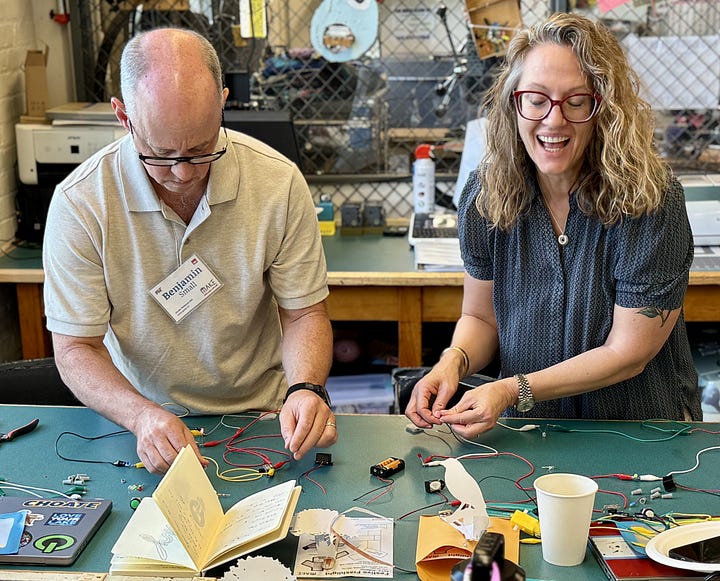
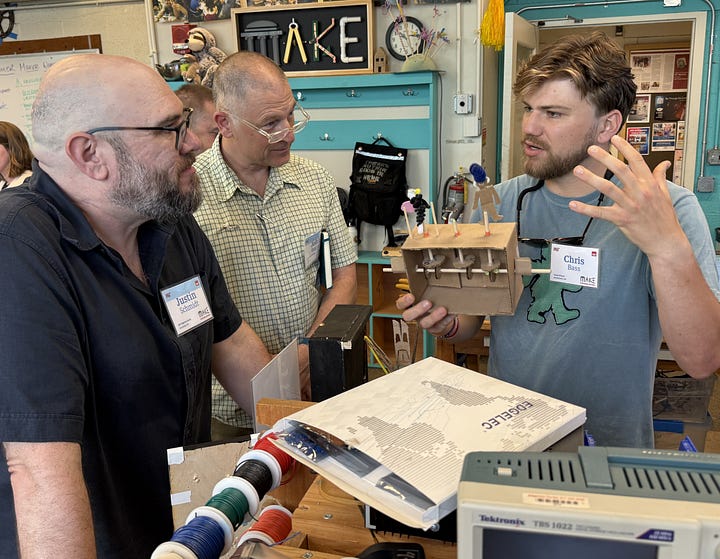
I’m Diane Brancazio and I am the founding leader of the K-12 Maker project and see myself as a Maker. The Maker mindset is a way of thinking and acting that informs the varied roles I have in life: engineer, teacher, parent, sailor. It includes researching, problem-solving, creativity, collaboration, sharing, and building – all skills and habits of mind that can be developed and honed independently.
None of this is new – humans have always been creative, collaborative inventors. What’s new are the technologies and communications channels available to us only in the past decade. The Maker movement is often seen as involving 3D printers, laser cutters, robots, electronics, and a variety of new high-tech tools, materials, and technologies. This is the stuff that gets people interested and aware. However, if this were the only draw, people would likely tire and move on to something else. I think what keeps people interested in making and makerspaces are the endless possibilities and human connections that open up. It’s not about the tools, but what we can do with the tools. And that’s where we access the satisfaction and joy that we as creative humans crave.
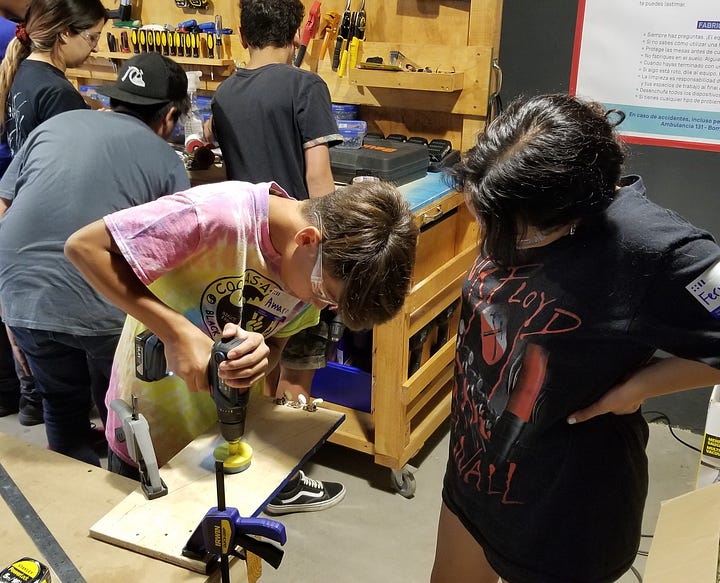
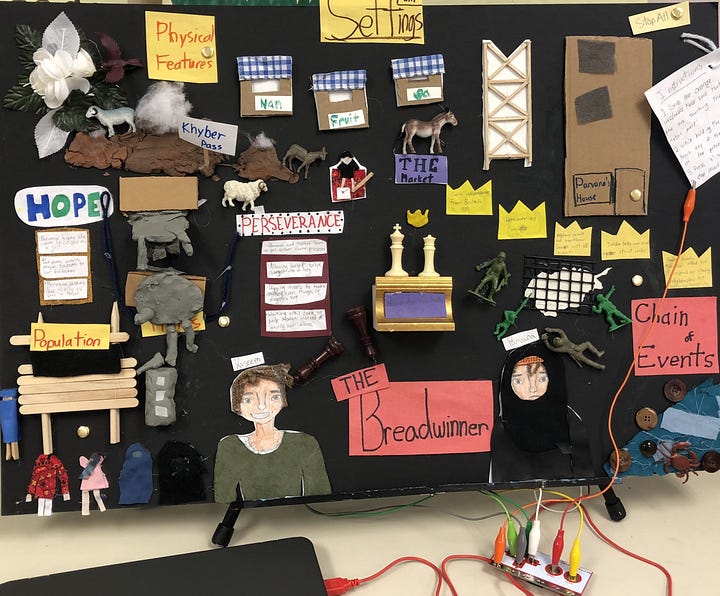
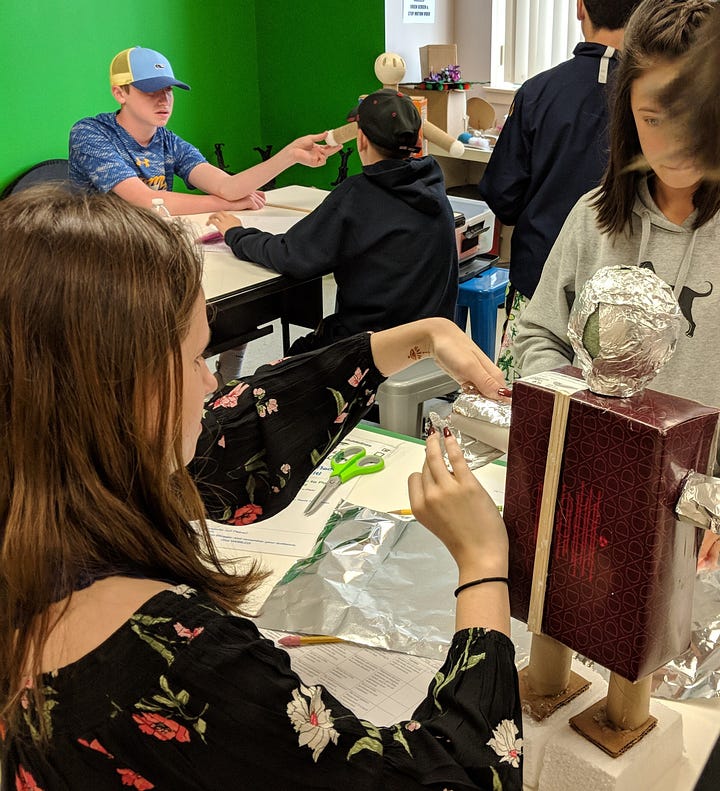
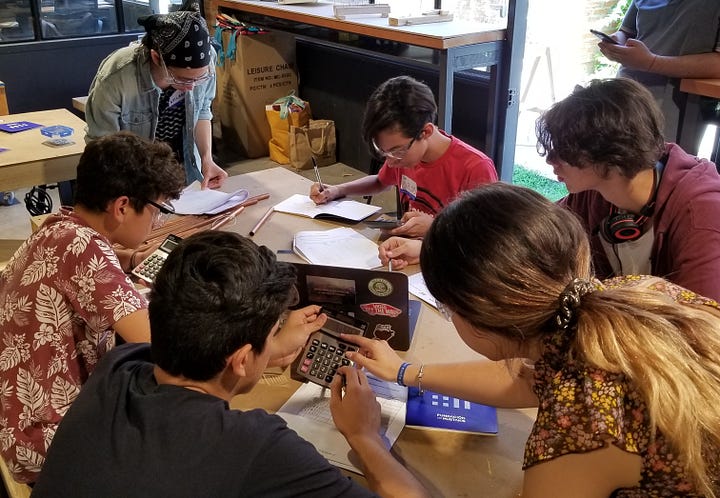
I only started to understand Making while completing a masters degree at MIT. Not much of a writer, I was thrilled to be able to express engineering concepts through built projects, and having a group of friends to learn and create with was even better. After a professional career in engineering and product design I shifted to public school teaching, sharing my love for engineering design and technology education with middle and high school students. During my 15 years as a classroom teacher I saw a growing focus on test scores and building resumes for college applications, and not surprisingly, an increase in anxiety and depression among students. There was also an explosion of technology in schools without clear connections to the things that foster students building their own knowledge: the opportunities to relate content to their own lives, to be heard, and to experience joy and wonder.
In 2015 I took a year off from teaching in public school and went back to MIT, this time to the Edgerton Center to create curricula for STEM summer camps. I was also hoping to absorb the MIT vibe and regain my passion for learning. Distressed at what high school was becoming, I was looking for inspiration and ways to “jazz up” the traditional classroom. At that time, the Maker movement was beginning to take hold at MIT. The labs had digital fab tools but emphasized the importance of community! Serendipitously, a friend told me about the makerspace she was setting up in her K-8 school, and how teachers from all grades were coming in to do Maker projects with their academic classes. The students loved the projects and impressed their teachers. This was the inspiration I was looking for! From my teaching experience with hands-on projects in academically rigorous schools, I started to think that Maker projects could be a great way to engage kids who were less “book smart” but plenty able to think deeply and creatively, and who could express ideas through building better than writing.
I wanted to bring this opportunity to more K-12 schools, and jumped into creating what has become the K-12 Maker Lab at MIT. I got my boss on board to add digital fab tools to our shop and turn it into a makerspace where we could also hold workshops for teachers. To understand the issues, I began researching makerspaces, looking up projects online, learning digital fab tools, and meeting the maker-people leading the charge in schools, libraries, and museums. It turned out that K-12 schools across the country were creating makerspaces and having mixed results. Presumably, school administrators hoped all of their students would learn STEM skills and access new technologies, but in many cases the makerspaces were only used for (or taken over by) robotics teams, engineering classes, and afterschool activities. If other educators had wanted to use the makerspaces, there wasn’t much guidance on projects or how to fit them into their curriculum. Makerspaces without a clear purpose, or with few teachers adequately prepared to maintain the tools or source materials, often became graveyards of Maker technology.
Despite these challenges I still found quite a few thriving spaces that enriched the school experiences of their students. Teachers worked long hours to design projects, share out student work, organize the space so students could direct themselves, keep the tools working, and teach colleagues how to use the tools. The student projects were remarkable, showing their depth of understanding and ability to use these new tools and materials to express learning in non-traditional ways. It appeared that Maker projects did result in meaningful learning experiences, but the lift required by teachers to create and facilitate this type of work was unsustainable.
In early 2017 I was awarded a grant from the MIT Teaching Systems Lab to study the impact of Maker projects on students and provide resources for educators wanting to integrate Maker projects and makerspaces in their schools. The year-long project was called Learning Supported by Making. We recruited 15 partner schools and co-designed the Maker Methodology, the basis of our Maker-in-academic-classes philosophy. The learning and enthusiasm we experienced in 2017-2018 was extraordinary. I attended the 3rd annual MakerEd convening in San Francisco in May 2017, and knew I had found my community. Collaborating with 30 experienced teachers who were willing to experiment with new technologies and practices was exhilarating. In 2018 I spent a couple of days at the NYC Maker Faire (at the NY Hall of Science, my favorite place growing up!) and was thrilled to see the Maker movement alive and well in my hometown.
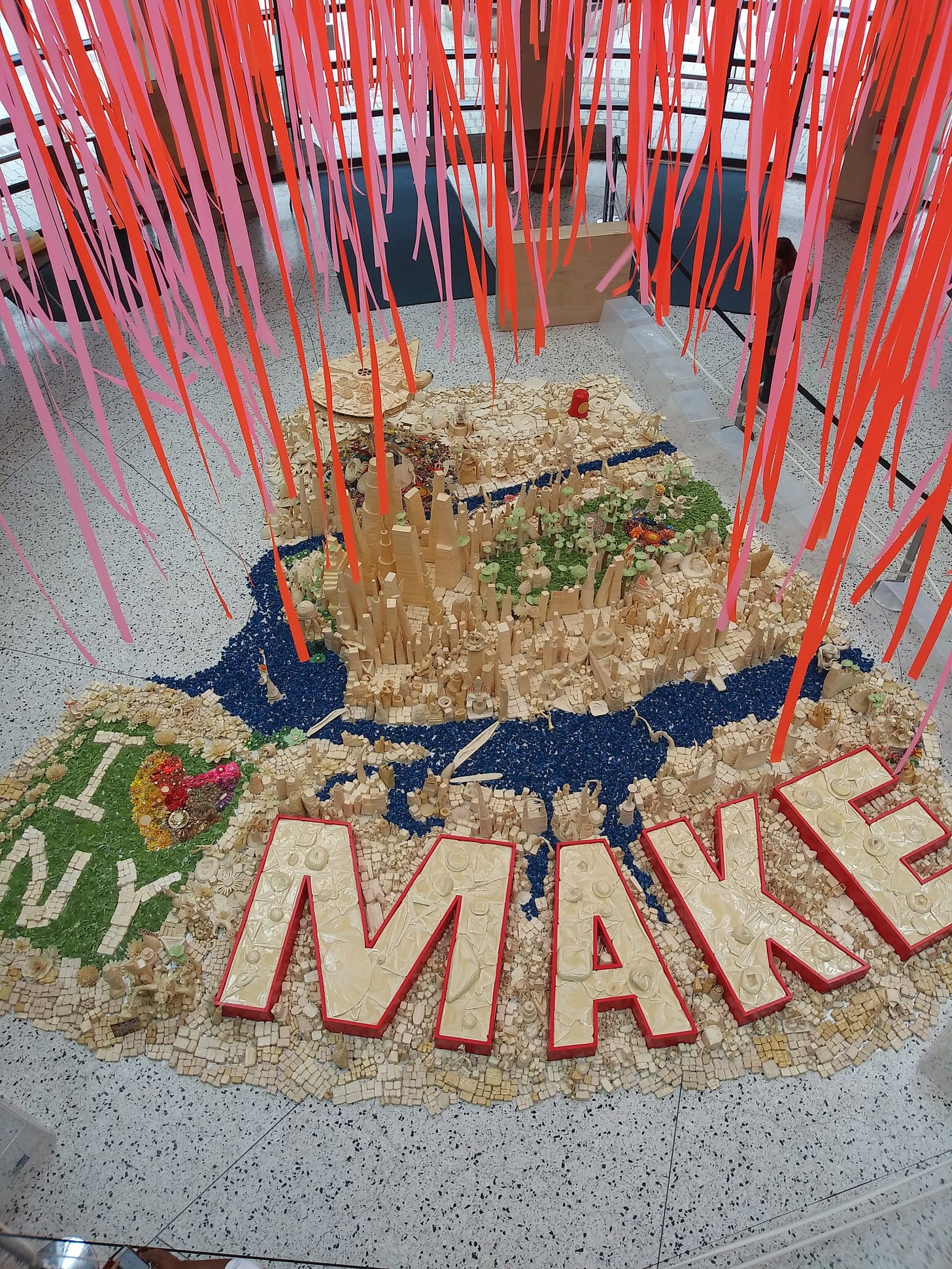
Since then the K-12 Maker Lab has partnered with schools around the world, worked with hundreds of teachers, and created dozens of free resources to help the Maker movement take root in academic settings. We are grateful for the support of the MIT Edgerton Center, the creative efforts of dozens of MIT students, and the invaluable perspectives from educators in our growing network of collaborators.
I invite you to take advantage of the (nearly) 10 years of experiences and contributions that went into creating the Master Making in the Classroom workshop series, and join us this Fall. While most of the materials are available on our website k12maker.mit.edu, the MMC training will help you use those resources effectively in a community of practice, with coaching along the way. We’ll be sharing the stories of our participating educators as we navigate through the school year! To hear more about what we do, subscribe to our newsletter Ideas and Events for Maker Educators
Learn more about Master Making in the Classroom, and apply here: https://k12maker.mit.edu/master-making-in-the-classroom


